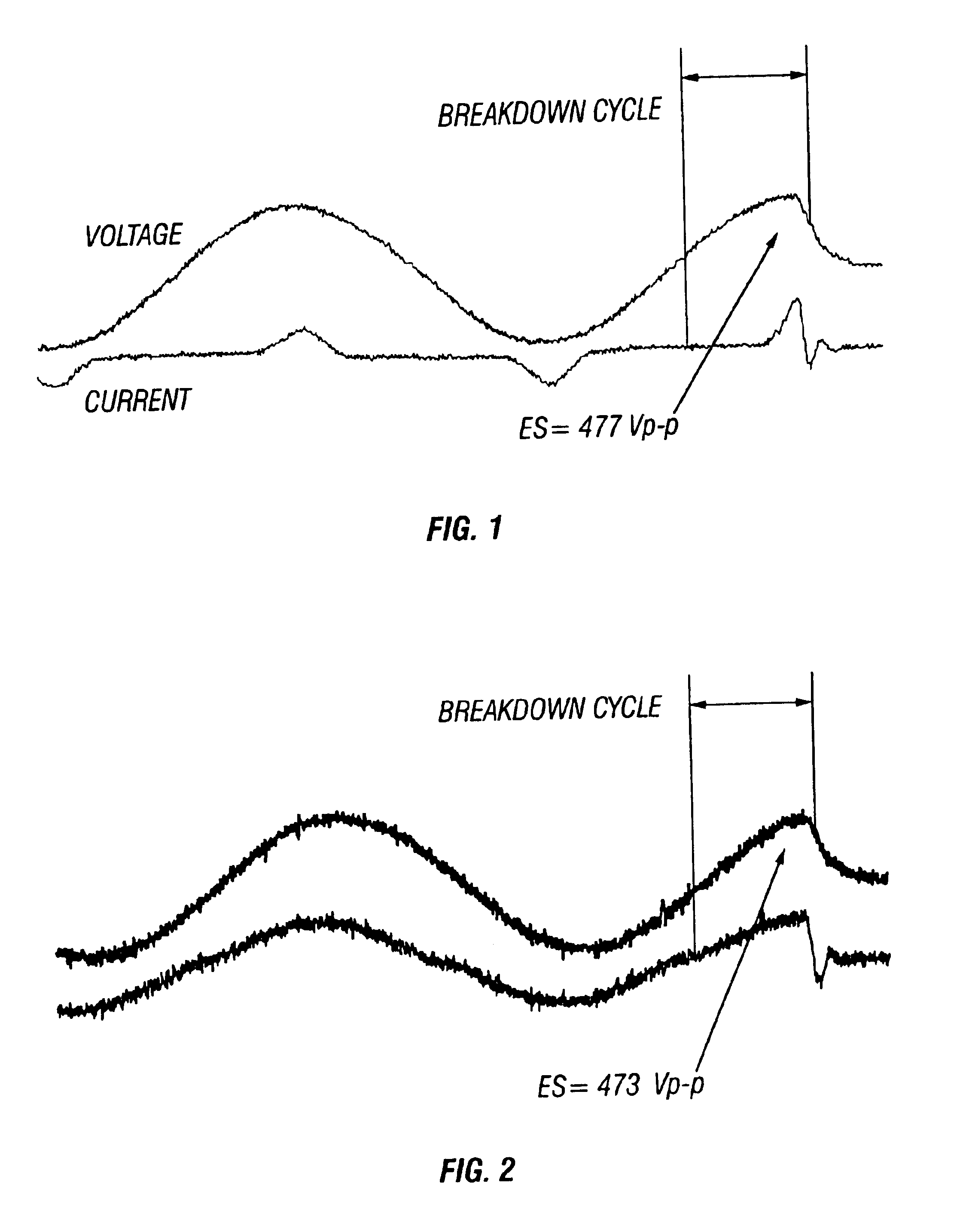Method for characterizing water-in-oil emulsions using electrical wave forms
a technology of emulsion and electrical wave form, applied in the direction of material breakdown voltage, reradiation, instruments, etc., can solve the problems of emulsion likely experiencing a true failure or “true” breakdown, characteristic rapid increase of curren
- Summary
- Abstract
- Description
- Claims
- Application Information
AI Technical Summary
Problems solved by technology
Method used
Image
Examples
Embodiment Construction
[0022]The method of the invention can be implemented with a general-purpose digital storage oscilloscope (DSO), attached to an ES meter, such as, for example, the FANN 23D, available from Halliburton Energy Services, Inc. in Houston, Tex. The DSO is connected with probes to the appropriate junctions in the circuit of the ES meter. This connection allows the DSO to accurately measure the voltage and current waveforms generated in the course of an ES test.
[0023]The circuitry of the ES meter performs six primary functions: power supply, test control, high voltage ramping AC sine wave generation, voltage measurement, break current threshold detection and ES voltage display. The sine wave generated by the ES meter starts at zero volts and increases, or ramps, at a steady rate. The ramping AC voltage is applied to the drilling fluid to be tested by means of a probe immersed in the fluid. The probe consists of two electrodes separated by a gap, and held by the electrically insulating body ...
PUM
| Property | Measurement | Unit |
|---|---|---|
| current | aaaaa | aaaaa |
| diameter | aaaaa | aaaaa |
| current levels | aaaaa | aaaaa |
Abstract
Description
Claims
Application Information
 Login to View More
Login to View More - R&D
- Intellectual Property
- Life Sciences
- Materials
- Tech Scout
- Unparalleled Data Quality
- Higher Quality Content
- 60% Fewer Hallucinations
Browse by: Latest US Patents, China's latest patents, Technical Efficacy Thesaurus, Application Domain, Technology Topic, Popular Technical Reports.
© 2025 PatSnap. All rights reserved.Legal|Privacy policy|Modern Slavery Act Transparency Statement|Sitemap|About US| Contact US: help@patsnap.com



